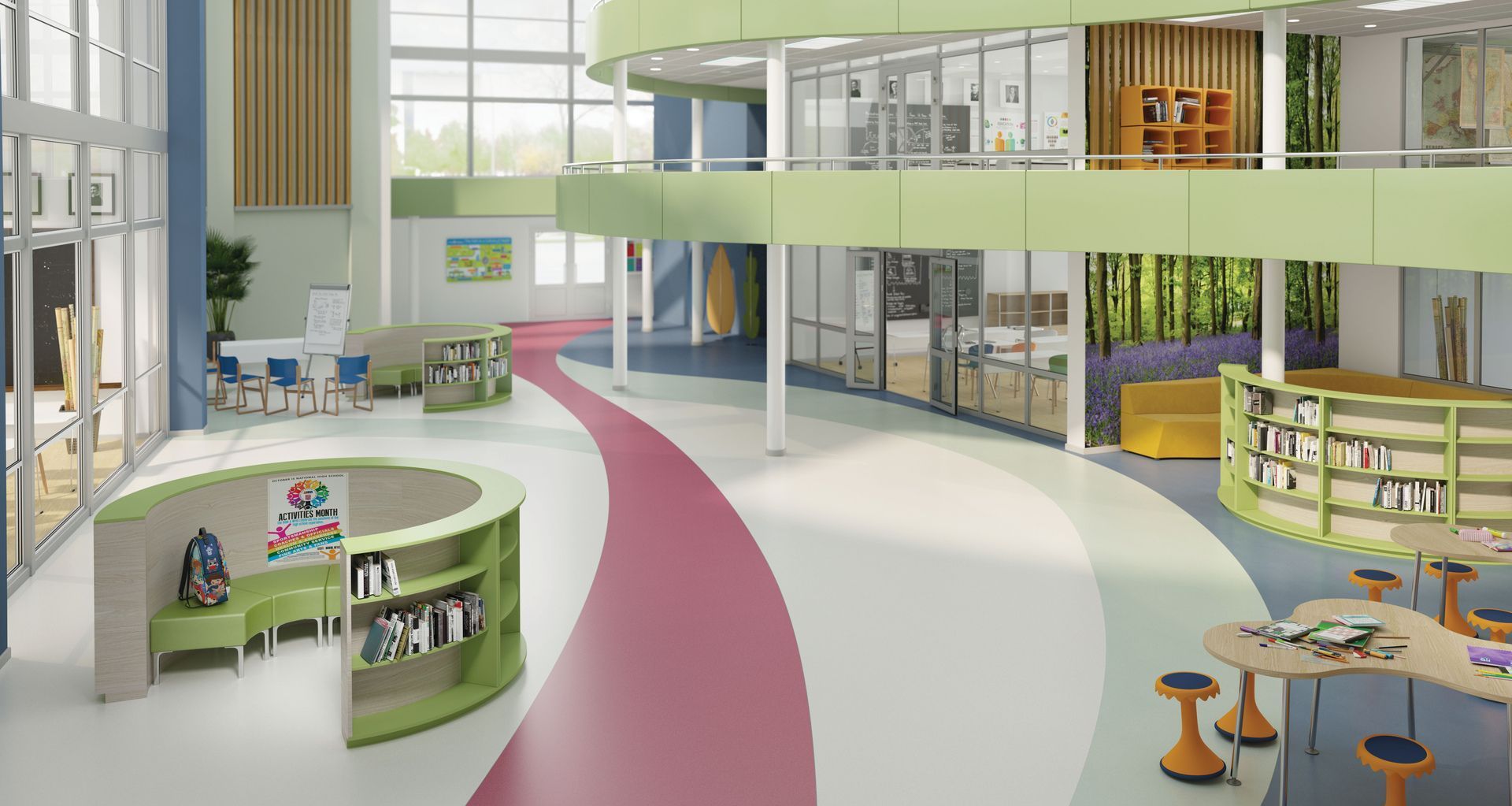Designing educational spaces with neurodiversity in mind
Written by
19 August 2024
•
5 min read


A recent report by Altro encompasses research findings and interviews with architects and designers on the best practices of designing educational spaces with neurodivergent individuals in mind.
According to the Designing Inclusive Educational Spaces: Principles and Practices for Neurodiversity report, ‘The design of educational spaces plays a critical role in shaping the learning experiences and outcomes of all students, including those who are neurodiverse.’
Lauren Owers, Marketing Manager at Altro, emphasises the importance of the study.
“Inclusive design principles are essential for creating environments that accommodate learners' diverse needs and preferences,” she says.
Altro, a provider of innovative flooring and wall cladding solutions, undertook extensive research for the report. “The white paper is a combination of research and interviews of end users within the education field, along with architects and designers, including a designer with neurodiversity,” Owers explains. “The paper explores how educational design needs to be more inclusive, looking at hygiene, cleanability considerations, colour, direction, sustainability, durability and accessibility.”
According to the Australian Bureau of Statistics (ABS), an estimated 30 to 40 per cent of the Australian population are neurodivergent. The Altro white paper shares insights from Jo Viney, Principal at Brinnie T Design, an autistic individual with two autistic children, who discusses the importance of specifiers providing inclusive designs for educational spaces.
“There are questions as to whether you would want a colour that stimulates or relaxes,” remarks Viney. “Different children with different scenarios may be working on different nervous systems. Some people have an emotional connection to colour, whereas other people do not.”
Key design considerations for neurodivergent inclusivity
According to Altro’s white paper, the design of educational spaces must go beyond colours to incorporate sound-absorbing or diffusing elements, maximise natural light and ventilation, and cultivate positive, therapeutic atmospheres conducive to overall wellbeing.
The report identifies seven key design considerations for neurodivergent inclusivity:
- Acoustics
- Colour
- Zoning of spaces
- Light reflectance
- Sensory aspects
- Socialness
- Privacy
Altro’s product range helps meet these key considerations. For example, the brand’s Altro Wood adhesive-free flooring range, available in 18 colours, offers a 14-decibel sound reduction and slip-resistance reassurance ideal for childcare centres. The clever adhesive-free installation method means it can be welded and walked on the same day and, at the end of its life, can be removed easily to be reused or recycled.
The brand's Altro Orchestra has been designed to provide an ideal learning environment and working environment. It has a low residual indentation, making it easy to move around furniture and equipment, such as tables and chairs. The integrated impact sound insulation system also reduces impact sound by 15 decibels. Altro Orchestra offers comfort underfoot, which is especially beneficial for students, patients, and hard-working staff who spend long hours on their feet.
Following the popular Bauhaus ethos (which emphasises style is as important as function), Altro Orchestra is available in 59 natural shades and five unique designs, making it ideal for specifiers to be creative. The extensive variety affords designers to choose from simple, warm finishes or more intricate designs that complement various design styles.


The future of designing education spaces
As our understanding of neurodiversity continues to grow, so too will the approaches to designing educational spaces. According to the report, future trends may include more flexible learning environments that quickly adapt to different activities and needs. Additionally, there may be a greater emphasis on biophilic design, which integrates natural elements to create calming and inspiring spaces that benefit both educators and students.
“Incorporating sustainable materials and energy-efficient systems will also become increasingly important, ensuring that educational spaces are inclusive and environmentally responsible,” says Owers.
Workshops, surveys, and focus groups can provide valuable insights into what works and what doesn’t, allowing designers to make informed decisions that enhance the overall learning environment.
Research and community engagement
Creating truly inclusive educational spaces requires collaboration with the community, including students, parents, educators and neurodiversity advocates. “Regular feedback from these stakeholders ensures that the design remains responsive to the evolving needs of its users,” says Owers. “Workshops, surveys, and focus groups can provide valuable insights into what works and what doesn’t, allowing designers to make informed decisions that enhance the overall learning environment.”
Altro’s investment in this extensive research and the development of innovative products can help meet the unique challenges of designing educational spaces for neurodivergent individuals. With over 105 years of global experience and a dedicated focus on hygiene, durability, and aesthetic appeal, Altro’s flooring and wall products surpass industry standards, ensuring enduring performance and user satisfaction.
Designing educational spaces for neurodiversity necessitates a holistic approach encompassing inclusivity, sustainability, hygiene and aesthetics. While addressing design challenges, it is essential to carefully consider neurodiversity and accessible design in education sectors, alongside other critical factors, to create truly comprehensive and practical solutions.
Read the full report or contact Altro on ArchiPro today for assistance with your next educational project.
